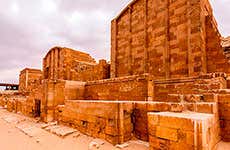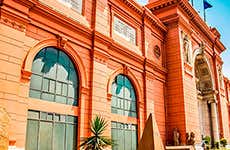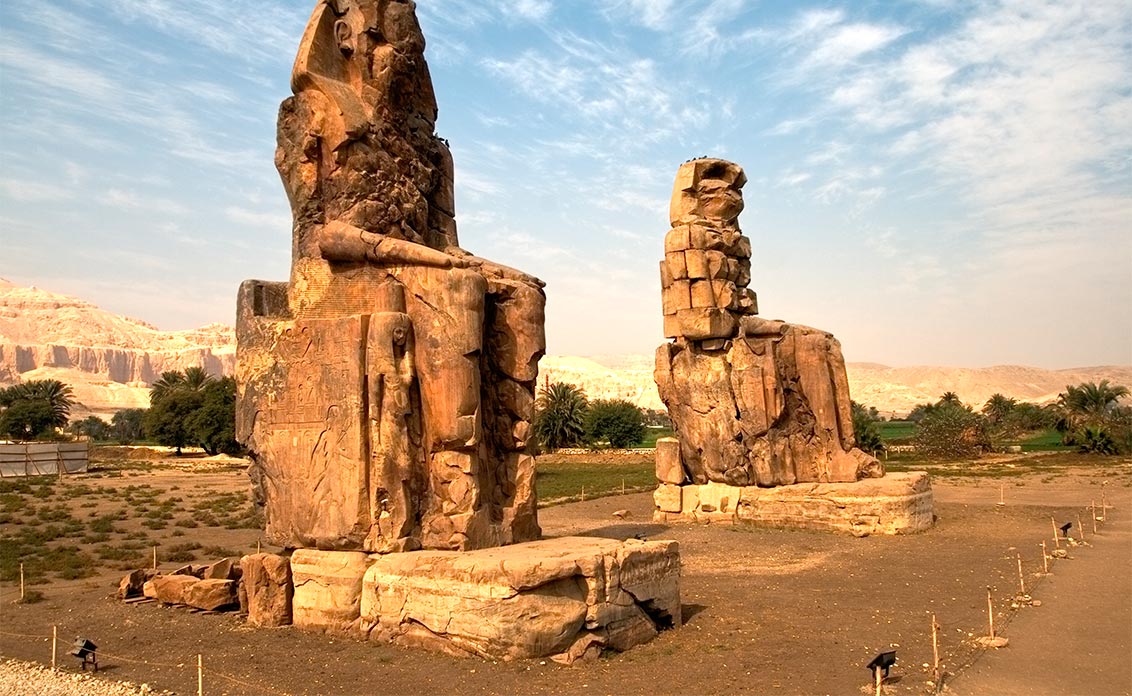
Colossi of Memnon
The Colossi of Memnon are two gigantic statues of Amenophis III that presided over his funerary temple on the west bank of the Nile at Luxor. The statues, built 3,400 years ago, show the pharaoh at ease, hands on his knees, gazing at the rising sun. His mother, Queen Mutemwiya, and his wife, Queen Tiy, are sculpted on the lower part of the statues.
Legend has it—and it's documented by several historians—that in the year 27 BC, an earthquake knocked down a large part of one of them. From then on, the other colossus began to ‘sing’ every morning at dawn. In the early 3rd century the Roman emperor Seventh Severus rebuilt the statue and its twin was silenced.
Dimensions
Each statue is 14 metres (45 feet) high, weighs 700 tons, and stands on a 4-metre-high (13 ft) pedestal weighing 600 tons. In total, the ensemble is 18 metres high (59 feet) and weighs 1,300 tons. Parts of the head and headdress are thought to be missing, so the actual height could have been around 21 metres (68 feet).
Each sculpture is constructed from a single block of granite brought from quarries located near Cairo, 675 km (419 miles) from Luxor.
So the legend goes...
We have already talked about the two largest and most famous giants. However, it must be said that there are 6 giants found in this area. The second pair is 15 metres (49 feet) high and the third is ‘only’ 11 metres (36 feet) high. The whole complex is currently being restored and rebuilt, including part of the temple of Amenophis III, which was totally destroyed by an earthquake in 1200 BC.
Visiting the Colossi
The Colossi of Memnon are usually included on guided tours of the ancient Thebes necropolises of the Valleys of the Kings and Queens, and the Temple of Hatshepsut:
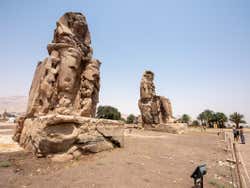
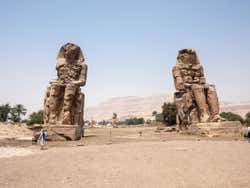

Schedule
Every day from 6:00 a.m. to 5:00 p.m.
